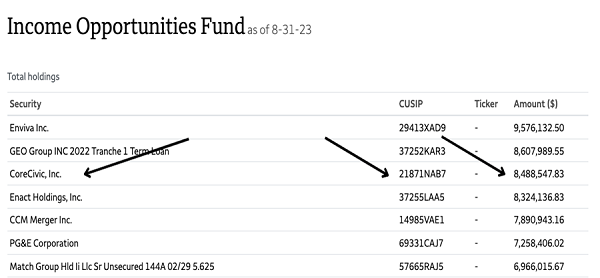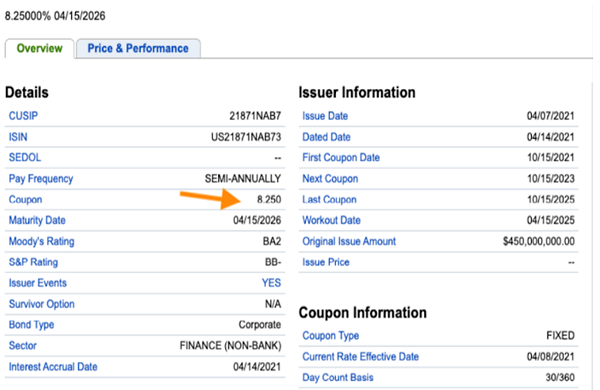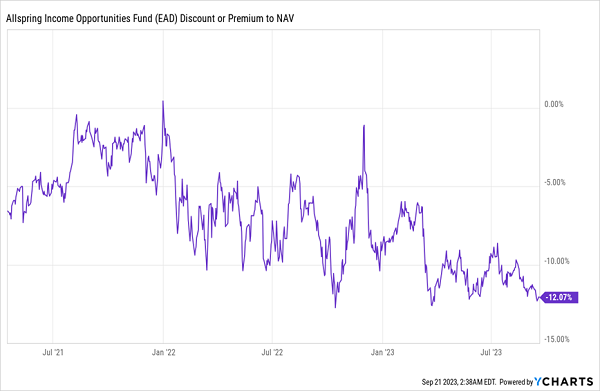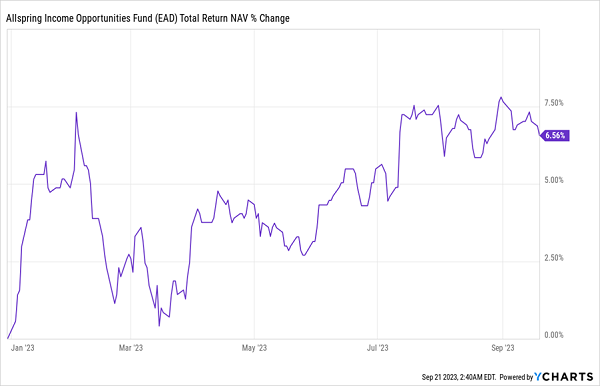The big jump in stocks—especially tech stocks—this year has proven the forecasts of imminent and dire recession that were seemingly everywhere in 2022 dead wrong.
Unfortunately, those predictions cost the investors who followed them an opportunity for gains (and dividends, too). And now many are likely wondering if it’s too late to get back in, prolonging the suffering.
If you’re one of them (or even if you’re just looking to diversify), let me give you a lower-volatility, higher-yielding option: corporate bond focused closed-end funds (CEFs).
How Corporate-Bond CEFs Work
To get a grasp of how corporate-bond CEFs work, we need to start with corporate bonds themselves.
Companies borrow money, sometimes by issuing debt (bonds, in other words) to the market, promising to pay interest payments annually and return the principal at the end of the bond’s term. The rates newly issued bonds give to investors rise as the Federal Reserve raises interest rates.
This is why we’ve been optimistic about corporate-bond CEFs all year at my CEF Insider service, and it’s why now is a really good time to buy.
Today, the average corporate bond yields over 8%, and to explain how buying bonds through a CEF works, let me start with an example: the $450-million bond issued in April 2021 by correctional-facility operator CoreCivic Inc. (CXW).
The Allspring Income Opportunities Fund (EAD) is a CEF that holds $8.5 million worth of that bond, or about 2% of the total bond offering.
 Source: Allspring
Source: Allspring
If we look up the bond’s term sheet, we see a lot of data that’s all important, but let’s focus on the “coupon” here, which is 8.25%.
An 8.25%-Yielding Opportunity
 Source: Fidelity
Source: Fidelity
And that yield is sustainable, as EAD has been collecting its dividend since its issuance over two years ago. In other words, EAD has been getting this huge, reliable income stream while the value of the principal hasn’t fallen with the market, since bonds are generally less volatile than stocks.
But with this bond having been issued more than two years ago, when interest rates were lower, you’d expect its value to have fallen, right? That hasn’t been the case: in fact, the bond’s value has risen slightly, to around $100.57 from its $100 price when it was issued.
But that’s beside the point: This bond has been paying an 8.25% income stream to EAD ever since the fund’s managers bought nearly $4 million worth of these bonds when they were initially released to the public, and they’ve added to their position since then.
Back on April 30, 2021, the fund announced it had bought nearly $4 million worth of this bond, meaning EAD has earned $330,000 per year, every year, on that investment, for a total profit of $797,500 (and counting—until the bond matures in April 2026, at which point EAD’s principal will be returned).
If they’d invested $4 million in a stock-index fund, they’d have earned just $405,600, or about half as much, illustrating that in some cases, bonds can outperform stocks, even though they entail less volatility.
EAD currently holds 241 such bonds, which is partly how this fund yields a whopping 9.3%, based on its discounted market price (the yield we get, in other words), and pays dividends monthly.
However, that yield is made more sustainable by EAD’s 12.8% discount to NAV, because the yield based on the fund’s NAV—or what management needs to cover the dividend—comes out to a much lower 8.1%.
This also means EAD buyers are getting this fund’s hugely diversified portfolio of bonds for less than they’re worth on the open market.
EAD’s Big Portfolio on Sale
 That widening discount in 2023 has come despite the steady gain in the fund’s NAV since the banking mini-crisis earlier this year—and despite the fact that EAD’s dividend is at its most sustainable level in a while.
That widening discount in 2023 has come despite the steady gain in the fund’s NAV since the banking mini-crisis earlier this year—and despite the fact that EAD’s dividend is at its most sustainable level in a while.
EAD Boasts Profits and Income
 A good call here is to buy EAD before other investors realize they’ve overlooked it and buy in, causing the discount on its big-yielding, high-quality portfolio to shrink.
A good call here is to buy EAD before other investors realize they’ve overlooked it and buy in, causing the discount on its big-yielding, high-quality portfolio to shrink.
— Michael Foster
5 Monthly Dividend CEFs to Buy Now (for 9.2% Average Payouts) [sponsor]
I’ve uncovered 5 CEFs that do something that’s nearly impossible to find in stocks, REITs or any other asset class: they pay dividends every single month.
Moreover, each of these funds—average yield: 9.2%–was oversold in the interest-rate panic of 2022, and they remain overlooked bargains today. That can’t last, when you consider that our quintet holds top-quality corporate bonds, blue chip stocks, REITs and utility stocks.
In other words, all categories that stand to gain as rates top out and move lower over time.
Now is the time to buy them, while we can still lock in their 9.2%-yielding monthly payouts at a bargain. Click here to get the backstory on these 5 bargain-priced income plays and an opportunity to download a free Special Report revealing their names and tickers.
Source: Contrarian Outlook
